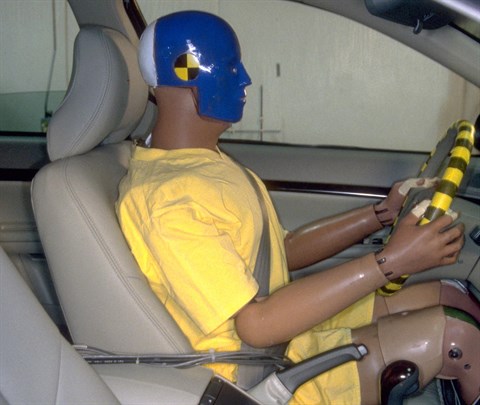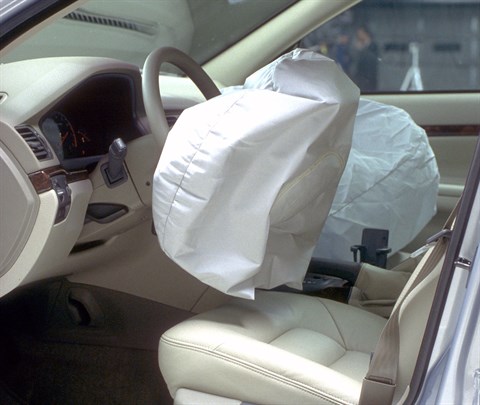Moderate overlap front: original test
Rating applies to 2001-06 models
Tested vehicle: 2000 Volvo S80 4-door
The Volvo S80 was introduced in the 1999 model year and modified beginning with 2000 models to include structural changes to improve occupant protection in frontal crashes. Beginning with 2001 models, the frontal airbags also were improved to include dual-stage inflators that permit low energy deployments in low severity crashes, sensors that reduce the likelihood of deployment in minor fender-benders, and vent holes positioned better to direct hot gasses away from a driver's hands.
The Insurance Institute for Highway Safety has evaluated the crashworthiness of the Volvo S80, based primarily on performance of a 2000 model in a 40 mph frontal offset crash test into a deformable barrier. The performance of 2001 and later models is rated separately from 2000s because the airbag modifications are expected to reduce or eliminate problems in restraint system performance observed in the 2000 model. Otherwise, performance of 2000 and later models should be very similar.
| Evaluation criteria | Rating |
|---|---|
| Overall evaluation | |
| Structure and safety cage | |
| Driver injury measures | |
| Head/neck | |
| Chest | |
| Leg/foot, left | |
| Leg/foot, right | |
| Driver restraints and dummy kinematics | |

Action shot taken during the frontal offset crash test.

The dummy's position in relation to the steering wheel and instrument panel after the crash test indicates that the driver's survival space was maintained well.

The S80's front seats are equipped with a whiplash protection system that combines good head restraint geometry with mechanisms in the seatback to reduce the risk of neck injuries in rear-end crashes.

2001 and later S80 airbags are improved compared with earlier models. Two-stage inflators allow for low energy deployment in less severe crashes, changes to the airbag sensors reduce the likelihood of deployment in minor fender-benders, and better positioned vent holes direct hot gases away from a driver's hands.
Head restraints & seats
Seat type: All seats
| Overall evaluation | |
|---|---|
| Dynamic rating | |
| Seat/head restraint geometry |
About the head restraint & seat test
Currently, IIHS tests apply only to front seats.